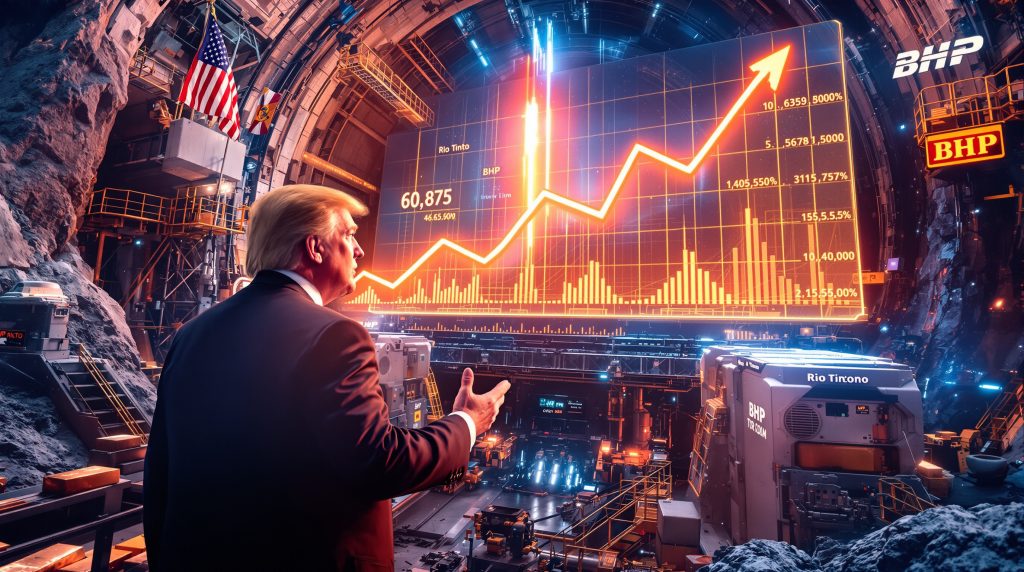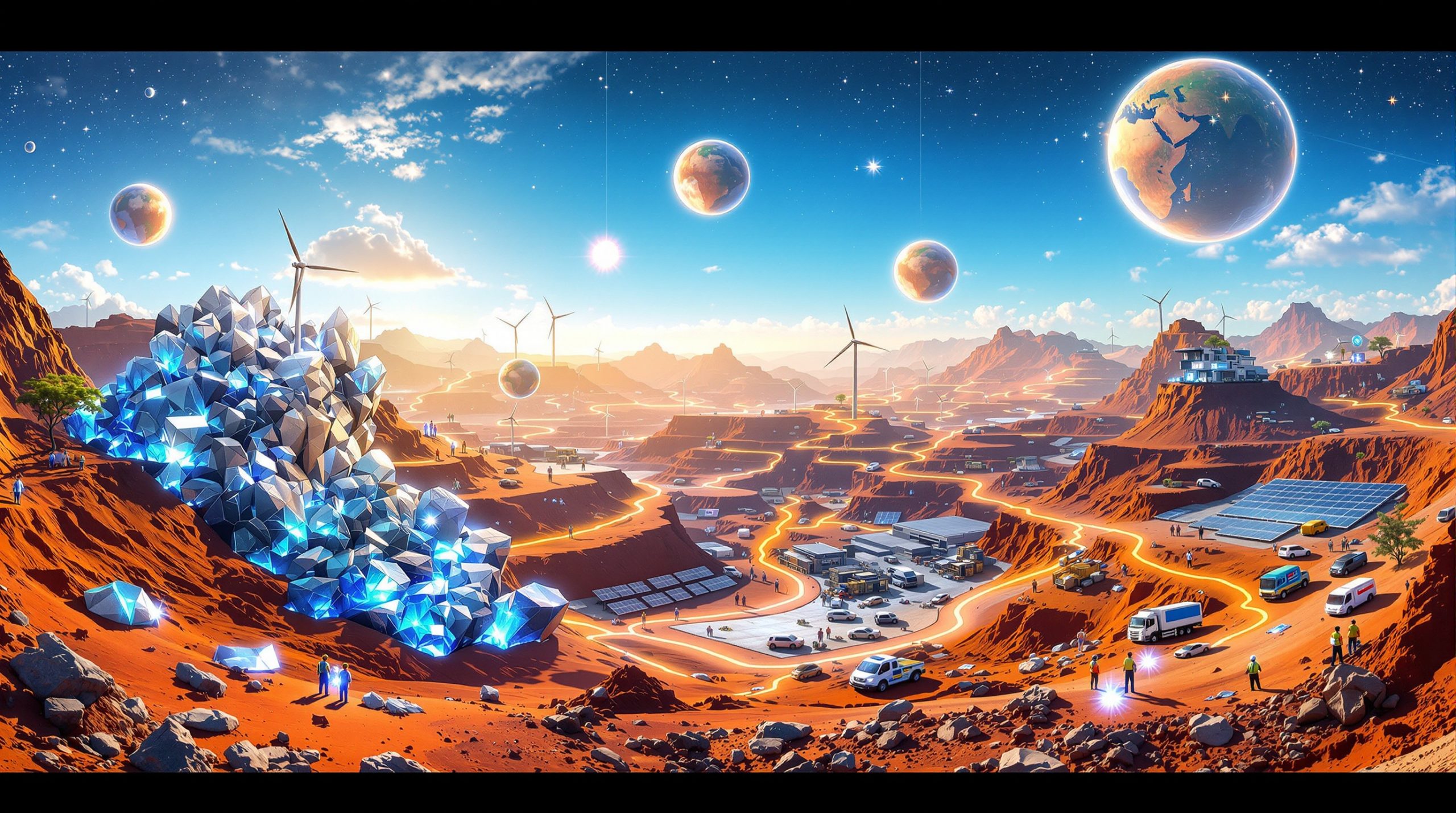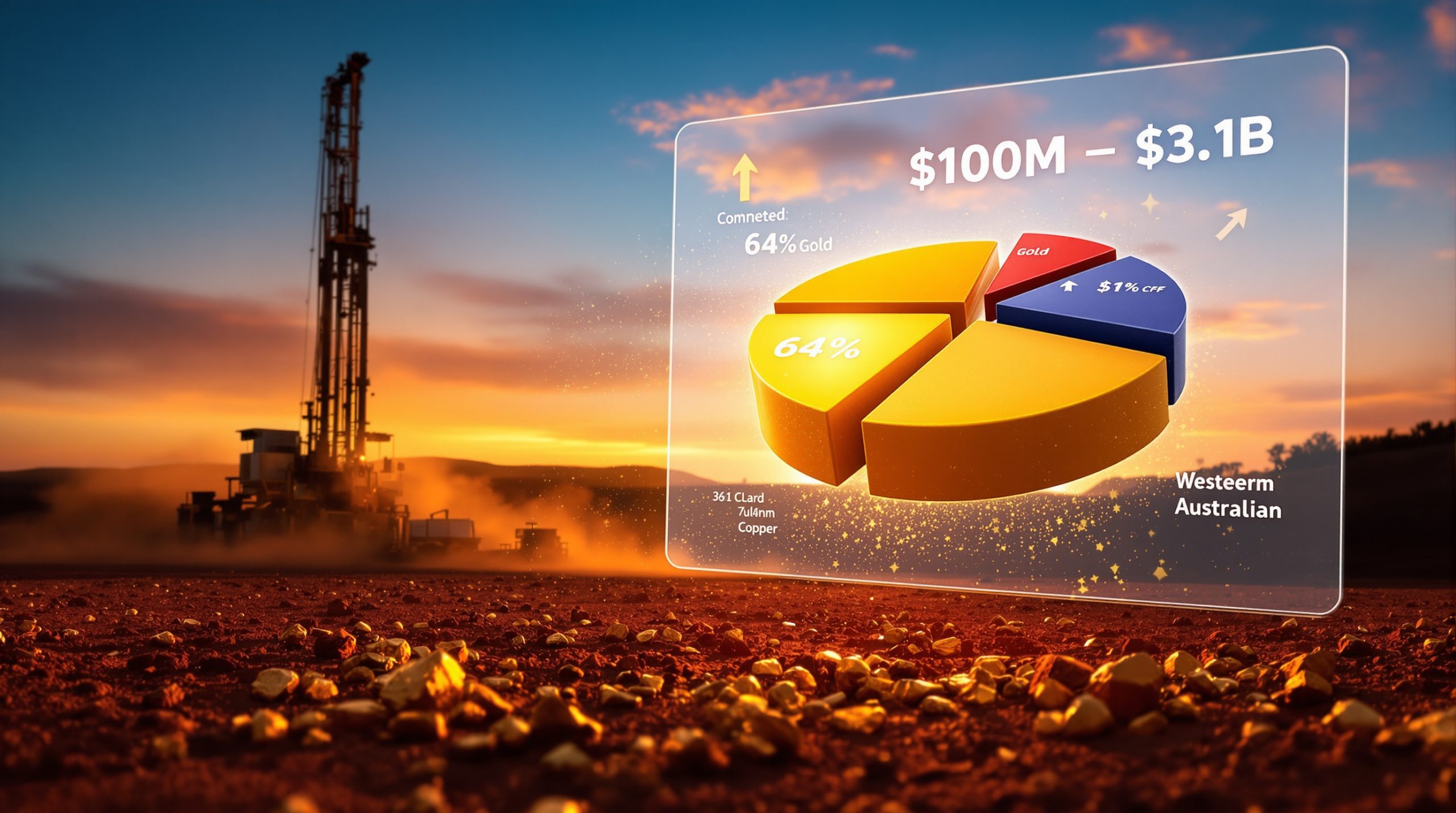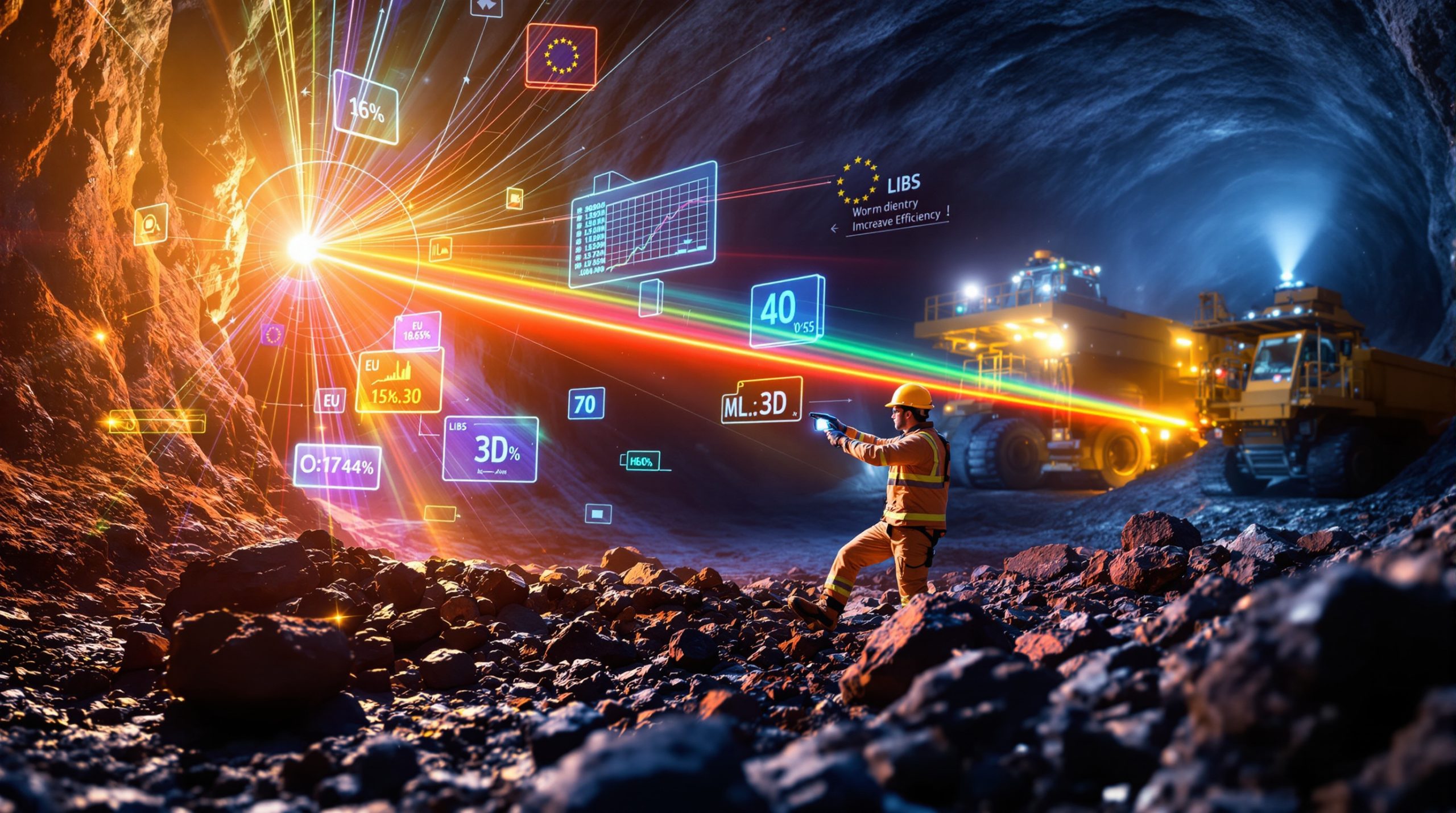Trump and the Resolution Copper Project: Political Influence on a Strategic Mining Development
The intersection of politics and mining development has taken center stage with the Resolution Copper Project in Arizona, as former President Donald Trump meets with mining executives to potentially accelerate what could become one of America's most significant copper production sites. This controversial project highlights the delicate balance between economic development, environmental concerns, and national security priorities that define modern resource politics.
What is the Resolution Copper Project?
Overview of the Arizona Mining Development
The Resolution Copper Project represents one of the most ambitious mining developments in recent U.S. history. Located near Superior, Arizona, approximately 60 miles east of Phoenix, this proposed underground mine has garnered attention for its potential to dramatically alter America's copper supply chain.
According to Rio Tinto, the project could supply approximately 25% of US copper production needs for up to 40 years. This significant production capacity would transform domestic copper availability for everything from traditional infrastructure to cutting-edge clean energy technologies.
The project is structured as a joint venture between Rio Tinto Group and BHP Group, two of the world's largest mining companies. This partnership brings together substantial technical expertise and financial resources necessary for a project of this magnitude.
Despite its potential, the development timeline illustrates the challenges of major mining projects in the United States. According to S&P Global data, the average time between discovery and commercial production for U.S. mines is a staggering 29 years—the longest timeline of any country except Zambia.
Technical Challenges and Investment Requirements
The Resolution project faces extraordinary technical hurdles that have required innovative solutions and substantial investment. Most accessible copper deposits in the region were depleted during the 20th century, forcing miners to target deeper reserves under challenging conditions.
The deep underground nature of the Resolution deposit presents extreme temperatures that would have made mining impossible in previous eras. Modern cooling technologies and advanced mining techniques are essential to make the project viable while ensuring worker safety.
These technical challenges translate directly into higher capital requirements. While specific investment figures for the Resolution project remain confidential, comparable deep underground mining operations have required multi-billion-dollar copper investment insights before producing their first pound of copper.
The project necessitates cutting-edge technologies in several areas:
- Advanced ventilation and cooling systems to manage extreme underground heat
- Sophisticated water management infrastructure to protect groundwater resources
- Automated mining equipment to improve safety and efficiency
- Enhanced mineral processing techniques to maximize recovery rates
Technical Note: Underground mining at Resolution will occur at depths reaching approximately 7,000 feet below the surface, where rock temperatures can exceed 175°F (79°C)—conditions that require specialized cooling infrastructure and operational protocols.
Why is the Resolution Project Politically Significant?
Strategic Importance for US Mineral Security
The Resolution Copper Project has gained political attention primarily because of copper's critical role in both traditional infrastructure and emerging technologies. Copper's excellent conductivity makes it irreplaceable in electrical applications, including renewable energy systems and electric vehicle manufacturing.
The United States currently imports approximately 35% of its copper needs, creating potential supply vulnerabilities. This import dependence becomes increasingly concerning as global competition for critical minerals intensifies, particularly with China's strategic accumulation of copper resources and processing capacity.
National security implications extend beyond direct military applications to include economic security and technological competitiveness. The ability to source copper domestically reduces supply chain vulnerabilities in critical industries.
The Biden administration previously classified copper as a critical mineral, and Trump's mineral policy suggests continuity in recognizing copper's strategic importance despite different approaches to implementation.
Job Creation and Economic Impact
The economic potential of the Resolution project extends well beyond the mine itself. According to figures cited in Trump's social media posts, approximately 3,800 jobs are directly associated with the project.
For Arizona communities, particularly those in Pinal County, these high-paying mining positions represent significant economic opportunities in a region that has experienced economic challenges since the decline of earlier mining operations.
The economic multiplier effect extends to supporting industries including:
- Construction and infrastructure development
- Transportation and logistics services
- Equipment manufacturing and maintenance
- Professional services including engineering and environmental monitoring
Compared to other major mining developments, Resolution's projected employment impact ranks among the more significant mining projects of the past decade, though it falls short of the employment levels seen during the peak of 20th-century American mining operations.
How Has the Trump Administration Approached Copper Mining?
Policy Framework for Domestic Mineral Production
The Trump administration has consistently prioritized domestic metals and minerals production as a cornerstone of its economic and national security strategy. This policy orientation reflects both economic nationalism and concerns about critical supply chains.
Implementation has included targeted Trump tariffs impact that affect copper products, though notably excluding refined copper material. This nuanced approach attempts to protect domestic manufacturing while ensuring access to necessary raw materials.
Executive authority has been leveraged to accelerate mining projects through various mechanisms, including:
- Streamlining permitting processes
- Reducing regulatory hurdles
- Prioritizing economic development over certain environmental concerns
- Emphasizing resource security in policy decisions
This approach marks a significant departure from previous administrations, which generally placed greater emphasis on environmental review processes and stakeholder consultations, often resulting in longer development timelines for major projects.
High-Level Political Engagement
The August 2025 White House meeting between Trump and mining executives—including Rio Tinto CEO Jakob Stausholm, incoming CEO Simon Trott, and BHP CEO Mike Henry—demonstrates the administration's willingness to engage directly with industry leaders on specific projects.
Trump's statements on social media regarding the Resolution project reveal his administration's framing of mining development primarily in terms of jobs and national interest: "A Copper Mine in Arizona, 'Resolution,' was just delayed by a Radical Left Court for two months — 3,800 Jobs are affected, and our Country, quite simply, needs Copper — AND NOW!"
The Interior Department's leadership has aligned with this messaging, emphasizing regulatory efficiency and domestic production over environmental concerns that dominated during previous administrations.
This strategic messaging positions critical minerals independence as both an economic and national security imperative, resonating with Trump's broader "America First" policy framework.
What Obstacles Does the Resolution Project Face?
Legal and Regulatory Challenges
The Resolution project has encountered significant legal roadblocks throughout its development timeline. Most recently, a court decision delayed the copper project by imposing a two-month delay on the land swap approval necessary for project advancement.
The environmental review process, while receiving final approval in June 2025, has been repeatedly challenged through legal channels by project opponents. These legal challenges often focus on technical aspects of the review process rather than substantive environmental concerns.
Opposition has come from a coalition of stakeholders including:
- Environmental conservation groups
- Indigenous rights organizations
- Local community activists concerned about water impacts
- Recreational land users
The court's two-month delay, while relatively brief in the context of the project's overall timeline, creates additional uncertainty for investors and potentially impacts financing arrangements and construction scheduling.
Environmental and Indigenous Concerns
Conservation arguments against the Resolution project center on potential impacts to Oak Flat, a federally protected area with significant ecological and cultural value. Critics argue that the land exchange essentially privatizes public land with special environmental characteristics.
Several Native American tribes, particularly the San Carlos Apache, have voiced strong opposition to the project based on the cultural and spiritual significance of the Oak Flat area. They maintain that the site contains sacred spaces that would be irreparably damaged by mining activities.
Water remains a central concern in the arid Arizona environment. Critics highlight potential risks including:
- Groundwater depletion from mining operations
- Potential contamination of aquifers and surface waters
- Long-term water quality impacts after mine closure
- Competition for scarce water resources in an already drought-prone region
Competing land use priorities further complicate the situation, with recreation, conservation, cultural preservation, and economic development advocates each making legitimate claims about optimal land utilization.
How Does the Project Reflect Copper Market Dynamics?
Global Copper Supply and Demand Trends
The copper market has experienced significant volatility in recent years, with prices advancing approximately 11% in 2025 alone. According to copper market analysis, copper was trading above $9,708 per ton on the London Metal Exchange as of mid-2025, approaching its record price of slightly above $11,000 set the previous year.
These price movements reflect fundamental supply constraints in global copper markets, including:
- Declining ore grades at existing operations
- Political instability in major producing regions like Chile and Peru
- Increasing production costs due to deeper mining requirements
- Environmental restrictions limiting new mine development
Demand drivers continue to strengthen, creating upward pressure on prices. Key factors include:
- Accelerating electrification of transportation systems
- Expansion of renewable energy infrastructure
- Growing electricity demand in developing economies
- Ongoing urbanization requiring copper-intensive construction
Market Analysis: The copper market is experiencing a structural supply deficit that is expected to persist through at least 2030, with annual shortfalls potentially reaching 8 million metric tons by the end of the decade if major new projects like Resolution don't enter production.
Investment Climate for New Copper Projects
Developing mega-mines in the United States presents unique challenges compared to other jurisdictions. The 29-year average timeline between discovery and production in the U.S. stands in stark contrast to the 12-16 year timeframes common in Australia and Canada.
International development comparisons highlight regulatory efficiency differences:
| Country | Avg. Years from Discovery to Production | Key Differentiating Factors |
|---|---|---|
| United States | 29 | Complex permitting, litigation, stakeholder processes |
| Zambia | 32 | Political instability, infrastructure limitations |
| Australia | 13 | Streamlined permitting, mining-friendly policies |
| Canada | 16 | Clear regulatory framework, established consultation processes |
| Chile | 14 | Mining-centric economy, specialized bureaucracy |
Risk factors for mining companies and investors include:
- Regulatory uncertainty and shifting political priorities
- Legal challenges increasing development costs
- Social license concerns affecting project viability
- Inflation and interest rate impacts on capital expenditures
- Technical challenges of deep underground mining
Major mining companies are strategically positioning themselves to manage these risks through:
- Portfolio diversification across jurisdictions
- Staged investment approaches
- Advanced community engagement strategies
- Technical innovation to reduce costs and environmental impacts
- Political risk management through government relations
What's Next for the Resolution Copper Project?
Potential Pathways Forward
The Resolution Copper Project faces several possible trajectories following the recent court-imposed delay. The most immediate challenge is resolving the land swap issues that have been temporarily halted.
Possible outcomes of the current legal challenges include:
- Expedited resolution – The two-month delay could be followed by swift approval if procedural concerns are adequately addressed
- Extended litigation – Appeals could potentially stretch for years if fundamental legal questions about the land exchange remain unresolved
- Modified project scope – Adjustments to the project footprint or operational parameters could emerge as compromise solutions
- Political intervention – Executive action could potentially accelerate approval processes, though this would likely face additional legal challenges
The timeline for resolution remains uncertain, though the recent high-level White House engagement with mining executives suggests political momentum behind advancing the project.
Key decision points in the near future include:
- Final resolution of the land exchange lawsuit
- Completion of remaining permitting requirements
- Final investment decisions by Rio Tinto and BHP
- Construction timeline announcements
- Infrastructure development sequencing
Implications for US Copper Strategy
The Resolution project represents a cornerstone of potential U.S. copper self-sufficiency strategies. Its success or failure will significantly impact the nation's ability to reduce import dependence for this critical metal.
Alternative approaches to meeting domestic copper demand include:
- Accelerated recycling programs to recover copper from existing products
- Development of smaller, less controversial copper deposits
- Strategic stockpiling of copper as a national security measure
- International partnerships with allied copper-producing nations
- Technological innovations to reduce copper intensity in key applications
The challenge remains balancing competing priorities—economic development, environmental protection, and national security—in a political landscape where these values often conflict.
Lessons from the Resolution experience will likely inform other critical mineral developments, particularly regarding:
- Stakeholder engagement strategies
- Environmental review processes
- Indigenous consultation approaches
- Legal risk management
- Political engagement requirements
FAQ: Resolution Copper Project
What is the current status of the Resolution Copper Project?
The Resolution Copper Project received final environmental approval in June 2025, a significant milestone after decades of development. However, a court decision in August 2025 imposed a two-month delay on the land swap approval necessary for the project to proceed. The project remains in development with major construction activities on hold pending resolution of these legal challenges.
How much copper could the Resolution Project produce?
According to Rio Tinto, the Resolution project has the potential to supply approximately 25% of U.S. annual copper needs for up to 40 years. This production capacity would make it one of the most significant copper mines in North America and a critical contributor to domestic metal supply. The underground deposit is considered one of the largest undeveloped copper resources in the world.
What are the main objections to the Resolution Project?
Opposition to the Resolution project centers on three primary concerns:
- Environmental impacts: Potential damage to the Oak Flat area, including surface subsidence and habitat disruption
- Indigenous rights: Cultural and religious significance of the site to Native American tribes, particularly the San Carlos Apache
- Water resources: Concerns about groundwater depletion and potential contamination in an already water-stressed region
How does the Resolution Project compare to other major copper developments?
The Resolution Project stands out from other major copper developments in several ways:
- Depth: Among the deepest large-scale copper mines proposed globally
- Grade: Higher copper concentration than many competing projects
- Timeline: Extraordinarily long development period even by mining industry standards
- Technical challenges: Extreme heat and depth creating unique engineering requirements
- Political profile: Unusually high level of direct presidential engagement
What is the significance of the White House meeting with mining executives?
The August 2025 White House meeting between Trump and executives from Rio Tinto and BHP signifies the elevation of the Resolution project from a regional development to a national priority. This high-level engagement demonstrates:
- The administration's prioritization of domestic critical mineral production
- Direct presidential involvement in specific mining projects
- Potential willingness to use executive authority to overcome regulatory or legal obstacles
- Recognition of copper's strategic importance to both traditional infrastructure and energy transition technologies
Key Data Points on the Resolution Copper Project
| Aspect | Details |
|---|---|
| Location | Superior, Arizona, USA |
| Ownership | Rio Tinto (55%) and BHP (45%) joint venture |
| Potential Supply | 25% of US annual copper needs |
| Projected Duration | Up to 40 years |
| Jobs Impact | 3,800 jobs |
| Current Copper Price | $9,708 per ton (LME) |
| YTD Price Movement | 11% increase in 2025 |
| Development Timeline | 29-year average in US from discovery to production |
| Current Status | Environmental approval given June 2025; land swap delayed by court for two months |
| Deposit Depth | Approximately 7,000 feet below surface |
| Technical Challenges | Extreme heat, water management, deep shaft mining |
Future Outlook for U.S. Copper Development
The Resolution Copper Project represents just one component of America's evolving critical minerals strategy. As global competition for resources intensifies and the energy transition accelerates demand for copper, domestic production capacity will become increasingly important.
Success or failure of this flagship project will send strong signals to mining investors about the viability of developing similar resources within the United States. A streamlined approval could encourage additional investment, while continued delays might direct capital toward more mining-friendly jurisdictions.
Regardless of political perspectives, the fundamental reality remains: copper demand is rising dramatically while new supply development faces increasing challenges. How America balances environmental protection, indigenous rights, and resource development will significantly impact its economic and national security position in the decades ahead.
For stakeholders following the Resolution Copper saga, the coming months will provide critical insights into whether this generation-spanning project will finally advance toward production or face additional delays in America's increasingly complex mining landscape.
Want to Know Which Mining Stocks Could Surge Next?
Stay ahead of the market with Discovery Alert's proprietary Discovery IQ model, delivering instant notifications when significant mineral discoveries are announced on the ASX. Understand why major discoveries like those highlighted in Trump's Resolution Copper discussions can lead to substantial returns by exploring the dedicated discoveries page.




